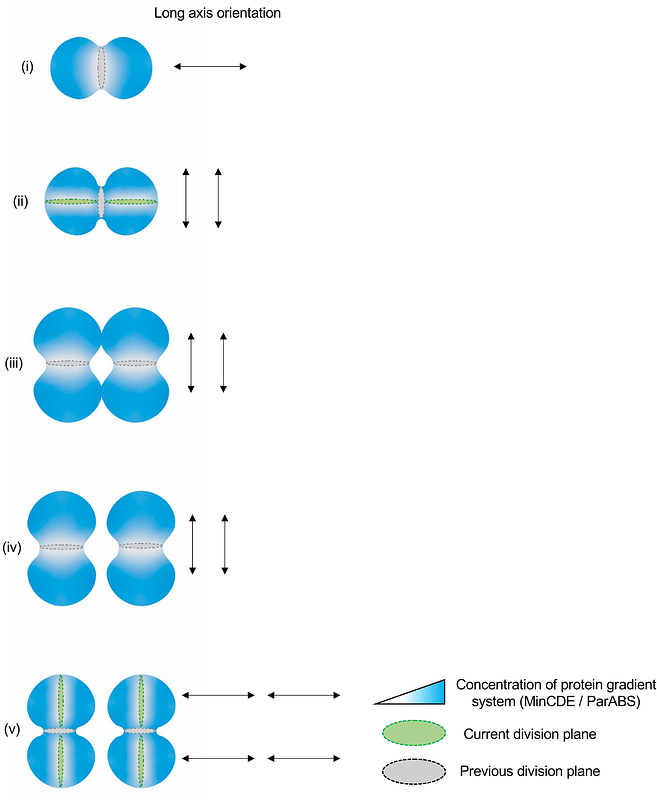Axial asymmetry organizes division plane orthogonality in Neisseria gonorrhoeae

Axial asymmetry organizes division plane orthogonality in Neisseria gonorrhoeae
Bandekar, A. C.; Ramirez-Diaz, D. A.; Palace, S. G.; Wang, Y.; Garner, E. C.; Grad, Y. H.
AbstractFor rod-shaped bacterial model organisms, the division plane is defined by the geometry of the cell. However, for Neisseria gonorrhoeae, a coccoid organism that most commonly exists as a diplococcus and that possesses genes coding for rod-based cell division systems, the relationship between cell geometry and division is unclear. Here, we characterized the organization of N. gonorrhoeae division using a combination of fluorescent probes, genetics, and time-lapse microscopy. We found that the planes of successive cell divisions are orthogonal and temporally overlapping, thereby maintaining diplococcal morphology. Division takes place perpendicular to a subtle long-axis in each coccus. In keeping with the ParABS and the MinCDE systems reading the long-axis of rod-shaped bacteria, in the coccoid N. gonorrhoeae, ParB segregates along this subtle long-axis and cells lacking minCDE have severe morphological consequences, including an inability to perform orthogonal division and aberrant assembly of the division plane at the cell poles. Taken together, this stresses the central role of even slight dimensional asymmetry as a general organizational principle in bacterial cell division.


